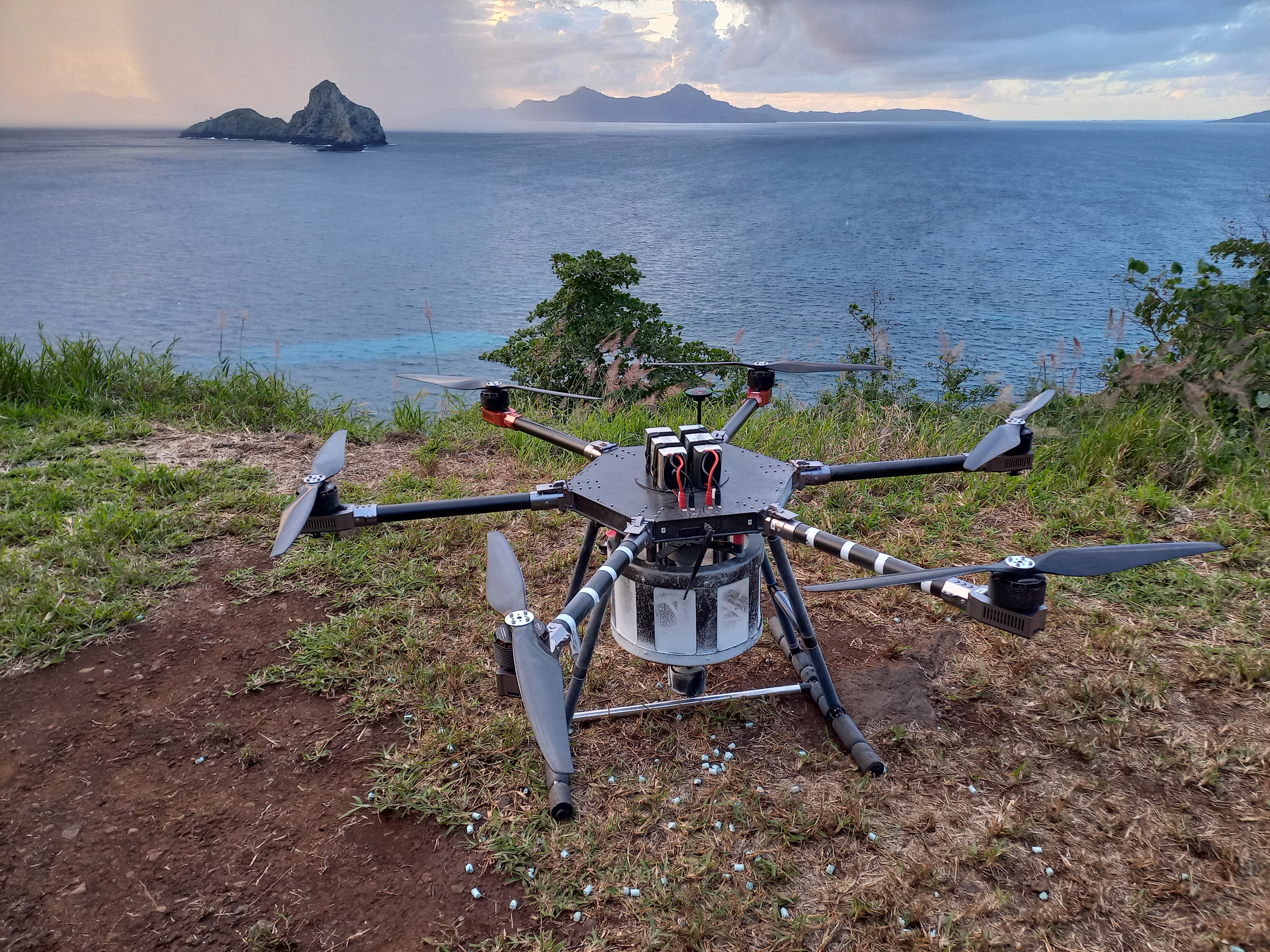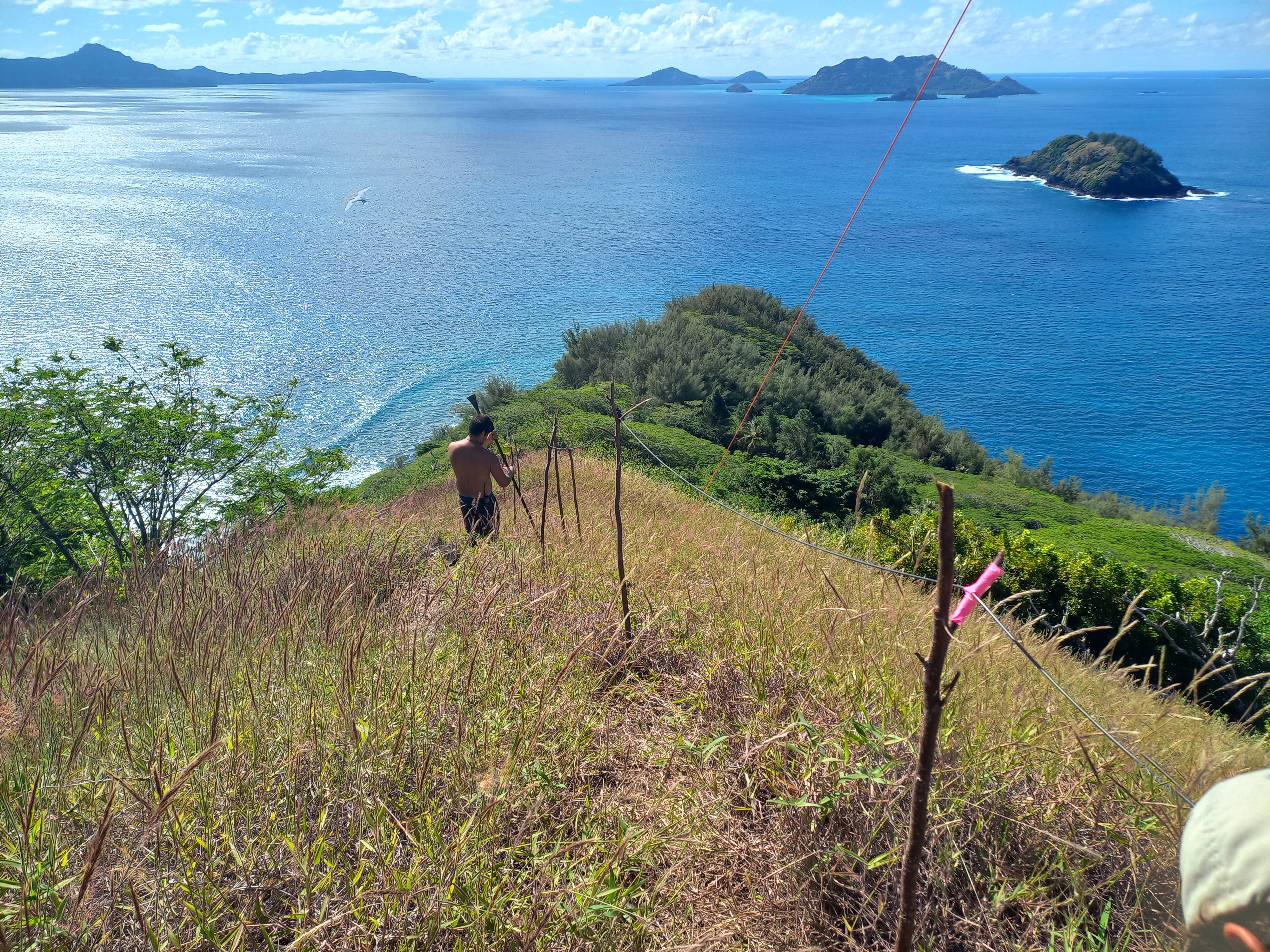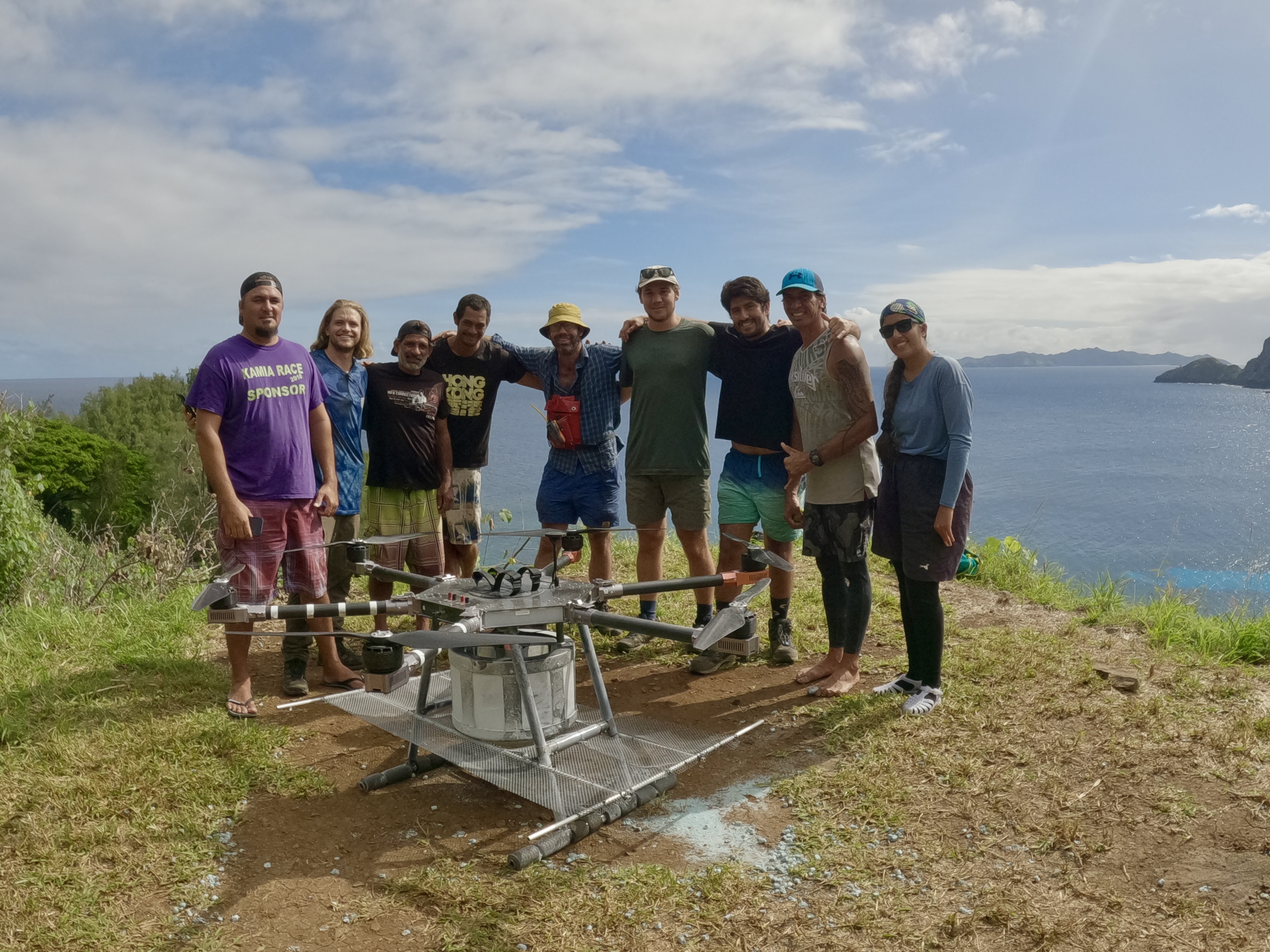



After an initial delay, the rat eradication operation was conducted in two campaigns between May 31st and July 3rd 2022, with a gap of 17 days between them. Aerial broadcast of bait containing brodifacoum at 25ppm was carried out by drone (UAV), which was more economical than a helicopter but presented significant operational challenges. The two campaigns were each completed at a minimum target rate of 30kg per hectare, with higher application rates applied along the coast and on steep faces. Baiting was supplemented by hand on the rocky coastline and steep faces. Buildings were treated by hand-baiting and bait stations. A total of 7,183.65 kg of bait was applied, 6210 kg by drone and 973.65 kg by hand. Eight full bags of bait (181.6 kg) were left securely stored in case it is required for a biosecurity response.
- The use of cutting-edge technology for the eradication campaigns.
- The collaboration of experts in invasive species eradication, especially in managing the Envico drone pilots.
- The effective deployment of logistics.
- Cables should have rat protection: A logistical problem arose during the first bait distribution attempt - the fiber-optic cable linking with the drone (via an antenna) was severed by a rat chew, slowing down the project. To overcome this, a new heavier duty cable had to be sourced from the US.
- For future projects, more duplicate parts needs to be brought in to replace parts that break or fail, as it is really difficult to source gear rapidly in Tahiti.
- It is essential to have alternative operational sites: another issue was that we had to move the drone’s take-off point to a site at 100 meters altitude. Indeed, the site selected on the coast for the take-off area resulted in an overshoot of flight time.
- There is always a logistical solution – due to moving sites, we had to find a way to rapidly transport nearly 7 tons of rodenticide. This problem was overcome by the installation of a temporary 70 m high zipline to transfer rodenticide bags (20 kg each). This device allowed the rodenticide to be transported in 4 days, by only 6 people, thanks to the support of members of the local community.